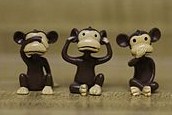 In May I posted a Dutch translation (1, 2) of an article by Vic prof, Manuel Llanas, describing the influence of German printers in Catalunya in the late C15th and early C16th. Technology transfer from Germany to Catalunya slowed subsequently, due less to religious and political rivalries than to the relatively slow progress of capitalism in war-plagued Germany. Holland and then England made the running, and the machines, expertise and capital for C18th Spain’s mines and mills came from Britain. It wasn’t until the late C19th that German tech vendors, riding the economic tsunami of the 1834 Customs Union, again began to make an impression.
In May I posted a Dutch translation (1, 2) of an article by Vic prof, Manuel Llanas, describing the influence of German printers in Catalunya in the late C15th and early C16th. Technology transfer from Germany to Catalunya slowed subsequently, due less to religious and political rivalries than to the relatively slow progress of capitalism in war-plagued Germany. Holland and then England made the running, and the machines, expertise and capital for C18th Spain’s mines and mills came from Britain. It wasn’t until the late C19th that German tech vendors, riding the economic tsunami of the 1834 Customs Union, again began to make an impression.
The nascent German state’s devastating, technology-driven defeat in 1871 of France, the world’s major power only 60 years before, had a large impact in traditionally Francophile Barcelona. Bayer was one of the first major German businesses to set up operations in Spain’s economic centre in this new era. Its first Spanish business – marketing colouring agents – was founded in 1899, the same year as FC Barcelony. With better pharmaceutical technology and brand management than local entrepreneurs like Dr Andreu, it grew rapidly. The photo above is of the restored facade of its old headquarters at the junction of París and Viladomat, conveniently opposite the city’s 1913 Vocational School (photo, official site). Bayer built a new front round the back of this building but is currently based at Pau Claris 196, the only chemical giant to have bucked the trend by not shifting its Spanish headquarters to Madrid.
Where Bayer came to Spain as part of the wave of paternalist robber capitalists unleashed by Bismarck, Eismann represents the consensual values of the post-WWII German economic miracle. Founded in 1964 as a conglomerate of mid-western (I just wanted to hear what that sounded like in a German context) dairy co-ops, it diversified its product range and geographic scope until its home-delivery vans hit Barcelona in 1992, Olympic year. Since 2002 it has been just another Nestlé brand, but sometimes corporate values take a while to trickle down: the Eismann van on the left of the photo has just jumped the lights and its driver is now rapidly assessing various scenarios involving the canarymobile and his passenger door.
The bicycle appears to be of Iberian manufacture.
(Plague your second-hand dealer for a copy of The Aspirin Wars: Money, Medicine, and 100 Years of Rampant Competition. Particularly interesting is the way Bayer and its competitors adapted to less-regulated markets by learning the odd trick off Dr Andreu.)
Similar posts
- And now a very spatial moment
Public English - Galdós and those spud-crazy guiris
Where did he get that - The power of love
These two energetic logos are on one of my favourite day-off wanders: from the Plaça d’Espanya through the old backstreets of - Buildings that count with elevators
Tapioles 3 is located in a Barcelona apartments building from the early twentieth century that has been fully restored and counts - De oudste sportwedstrijden in Spanje
De Ronde van Catalunya eindigt hier overmorgen. Ik heb alleen een heel klein stuk gezien, toevallig wanneer iemand uit de Rabobank

So when did Bayer build it? We need numbers
You ungrateful sod. This is half-hour history, so you’ll be lucky if I get anything right.
The answer of course is that I don’t know but wish I did. If it’s any comfort, the standard sources I flicked through in my regulation 30 minutes didn’t seem to know either. Industrial history here is still to a large extent about pre-WWI textile factories.